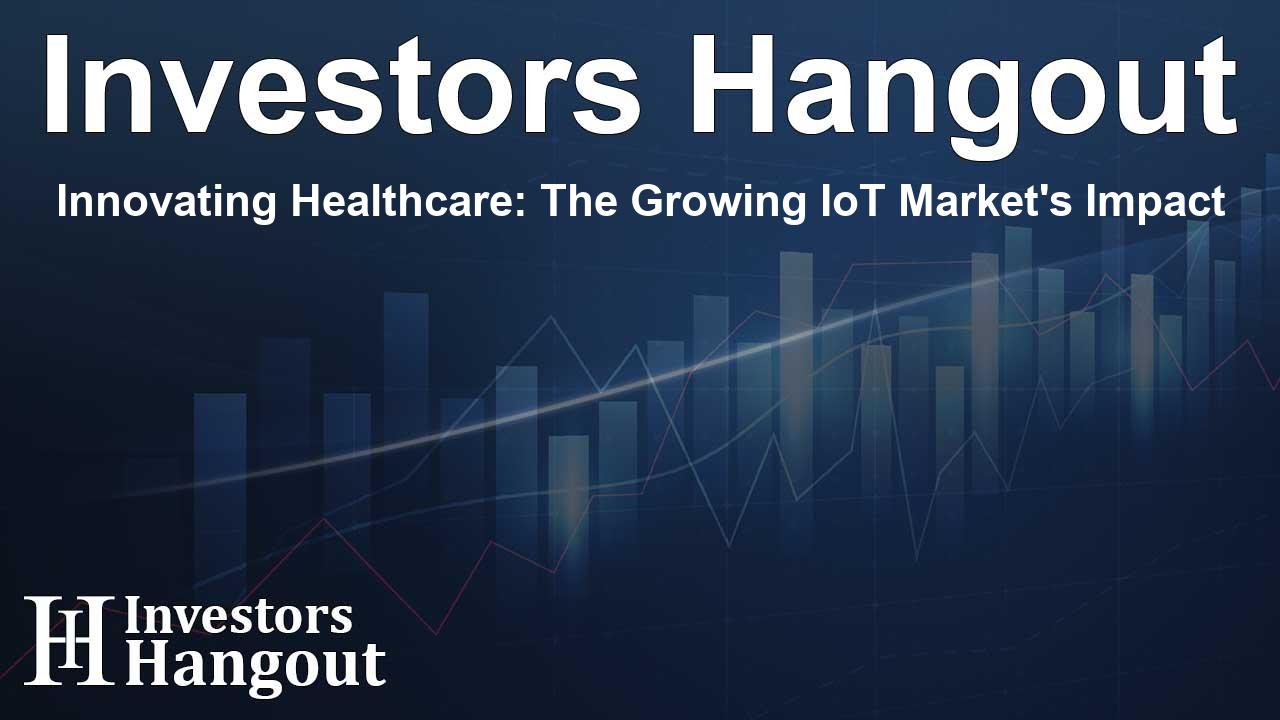Innovating Healthcare: The Growing IoT Market's Impact

The Booming IoT Market in Healthcare
The global healthcare market is on the cusp of revolution, propelled by the Internet of Things (IoT). Recent projections indicate a remarkable growth trajectory, with an expected market valuation of USD 243.40 billion in the near future, escalating further to reach over USD 1 trillion by 2035. This expansion is primarily fueled by a compound annual growth rate (CAGR) of 15.3%.
The Role of Technology in Transforming Healthcare
IoT in healthcare signifies a substantial shift in medical services, integrating transformative technologies such as wearable devices, connected medical equipment, and telehealth platforms. These advancements are not merely trends; they power real-time data collection and enhance patient monitoring, promoting personalized healthcare solutions that yield better outcomes and streamline operations.
Data Connectivity and Monitoring
Central to the success of IoT in healthcare is its ability to facilitate uninterrupted access to real-time patient data. Doctors can now monitor patients remotely, while individuals utilize fitness trackers to enhance their health and remind them of medication schedules. This digital shift has notably improved care for patients with chronic conditions such as diabetes and asthma, indicating a growing reliance on connected health technologies.
Challenges Facing the IoT Healthcare Market
As promising as the IoT landscape looks, it does not come without hurdles. One major challenge is the prevalence of outdated IT infrastructures in many healthcare organizations, which hampers the seamless integration of new technologies. Additionally, increasing reliance on IoT raises substantial data security and privacy concerns, exposing healthcare systems to potential cyber threats.
Growth Catalysts for IoT in Healthcare
Despite the challenges, a number of factors are driving the growth of IoT in healthcare. The demand for remote patient monitoring solutions is surging due to an aging population and the necessity for continuous management of chronic diseases. Moreover, patients are becoming more proactive about their health, thanks in part to IoT-enabled wearable devices that empower them to embrace preventive healthcare strategies.
Future Landscape of IoT in Healthcare
The future of the IoT healthcare industry is bright, promising innovations that enhance operational efficiency and patient care. Smart hospitals are on the rise, employing IoT to streamline processes from inventory management to connected equipment functionality. Telemedicine has also gained traction, enabling virtual consultations that provide seamless diagnostics and remote treatment solutions.
Investment in Cybersecurity
With the accelerated adoption of IoT in healthcare, robust cybersecurity measures are crucial to safeguarding sensitive patient information. Market players are focusing on developing secure, user-friendly technology to foster trust and reliability among consumers.
Key Market Players in the IoT Healthcare Industry
A variety of companies are leading the charge in this evolving IoT healthcare market. Notable firms include Medtronic, GE HealthCare, Philips, and Apple, along with technology giants such as Microsoft and IBM Watson Health. These companies are committed to utilizing advanced technologies to improve healthcare services and patient outcomes.
Regional Insights on IoT Adoption
The North American region continues to dominate the IoT healthcare space, buoyed by a strong healthcare infrastructure, abundant R&D investments, and favorable policies for digital health transformation. Meanwhile, European nations are increasingly focusing on sustainability and regulatory frameworks to boost IoT adoption in health sectors. Asia-Pacific is experiencing rapid growth, especially in countries like India and China, where healthcare access is being expanded through government initiatives.
Frequently Asked Questions
1. What is the current market valuation of IoT in healthcare?
The market is projected to reach USD 243.40 billion in the near future, with expectations to exceed USD 1 trillion by 2035.
2. How is IoT transforming patient care?
IoT technologies facilitate real-time data access, enabling remote monitoring and personalized healthcare solutions.
3. What challenges does the IoT healthcare market face?
Key challenges include outdated IT infrastructure, data security concerns, and the need for skilled personnel to manage new technologies.
4. Who are the major players in the IoT healthcare space?
Major companies include Medtronic, GE HealthCare, Philips, Apple, Microsoft, and IBM Watson Health.
5. What are the future trends for IoT in healthcare?
The market will likely see increased integration of smart hospitals, telemedicine, and investment in robust cybersecurity measures.
About The Author
Contact Olivia Taylor privately here. Or send an email with ATTN: Olivia Taylor as the subject to contact@investorshangout.com.
About Investors Hangout
Investors Hangout is a leading online stock forum for financial discussion and learning, offering a wide range of free tools and resources. It draws in traders of all levels, who exchange market knowledge, investigate trading tactics, and keep an eye on industry developments in real time. Featuring financial articles, stock message boards, quotes, charts, company profiles, and live news updates. Through cooperative learning and a wealth of informational resources, it helps users from novices creating their first portfolios to experts honing their techniques. Join Investors Hangout today: https://investorshangout.com/
The content of this article is based on factual, publicly available information and does not represent legal, financial, or investment advice. Investors Hangout does not offer financial advice, and the author is not a licensed financial advisor. Consult a qualified advisor before making any financial or investment decisions based on this article. This article should not be considered advice to purchase, sell, or hold any securities or other investments. If any of the material provided here is inaccurate, please contact us for corrections.
